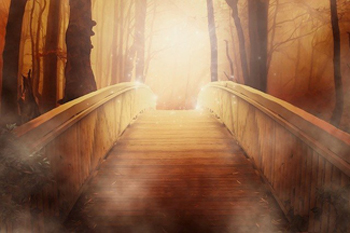
According to a recent Gallup Poll the world is unhappier and more stressed out than it has ever been.
Billions of people around the world were jolted out of the belief that life would go on as always when the Covid-19 pandemic began. Many became anxious or depressed, not knowing how to adjust to the new reality. Creativity can help us navigate this time of transition and create new visions.
As author, ethnobotanist, and philosopher Terence McKenna has said, “You are an explorer, and you represent our species, and the greatest good you can do is to bring back a new idea—because our world is in danger by the absence of good ideas. And so to whatever degree any one of us can bring back a small piece of the picture and contribute it to the building of the new paradigm, then we participate in the redemption of the human spirit.”
But many of us are reticent to deepen our creative skills due to our misconceptions of highly creative people. Here are five myths about creativity from my book Core Creativity to debunk these illusions.
Myth #1 – Creatives are lazy and lack discipline.
I’ve always found it curious that people who are out of touch with their creativity assume that creative people are lazy and lack discipline. With almost no exceptions, the highly creative people I have met and worked with over the last 40 years are the opposite of this myth. They pick up an instrument or a paintbrush, get themselves to the dance studio and begin to warm up, set appointments to collaborate with others, and persevere at generating ideas until something comes to them. Many have some type of regular mindfulness practice that quiets the chatter of the analytical brain and awakens the parts of the brain involved in creativity. You might say that when they seem to be idle, they are actually doing something very important: Working with the brain and their mind state to prime themselves to experience high levels of creativity.
Myth #2 – Creatives are depressed or mentally unstable or both.
Another myth people have heard about creatives is that they are depressed or mentally unstable or both. It is true that some creatives, like Van Gough, have been diagnosed with bipolar disorder, depression or anxiety but the vast majority of studies today show no connection with these psychological disorders and creativity. In fact, they demonstrate that creative people are less likely to be mentally ill than people who are out of touch with their creativity. However, if you do have an emotional/mental disorder, a mindfulness practice can be extremely helpful for managing it.
Myth #3 – You lose your creativity as you get older.
Many people subscribe to the myth that we automatically lose creativity as we get older. We’ve all heard of late bloomers who hit their stride creatively after midlife. Frank McCourt, who taught English at high schools and technical colleges, wrote his first book when he was in his mid-sixties: Angela’s Ashes, his memoir about his impoverished upbringing in Ireland. The book went on to win a Pulitzer Prize and became an acclaimed feature film. If you’re afraid it’s too late to become highly creative, recognize that creative people may simply have developed and sustained habits of thinking differently—something you, too, can choose to do at any age.
Myth #4 – A child’s imagination needs to be deprioritized in order be successful as an adult.
It’s unfortunate that myths about creativity and pressures in our younger years keep so many people from accessing and maintaining their creative abilities. That marvelous sense of freedom to create that you had as a child is something that you can get back. If you feel you didn’t really have it, you can get it now—even into your 100s. It’s available to you and everyone. From a brain plasticity perspective, closed doors can spring open in the pursuit of creativity, but for this to happen, you have to let go of old notions that were drilled into you. Imagination is underrated. I’ve seen it be the key to people moving past devastating losses and into a new state of happiness, well-being, and satisfaction.
Myth #5 – Groups or teams can’t be creative unless they are in a room together.
Some believe that teams can’t be creative or productive unless they’re in a room together, so people must spend their workdays in offices for the creativity to flow and people to remain on task. A better way to think about the current mix of working in offices and remotely is to recognize that even if workers are able to return to open-space offices completely at some point (and many workers hated this type of setup anyway), there might be an advantage to changing how teams work together remotely and in physical space. Zoom and similar software apps weren’t on anyone’s radar twenty years ago, but now we can’t imagine life without them.
I encourage you not to let your misconceptions about creativity and creatives stop you from exploring your creative abilities and imagination.